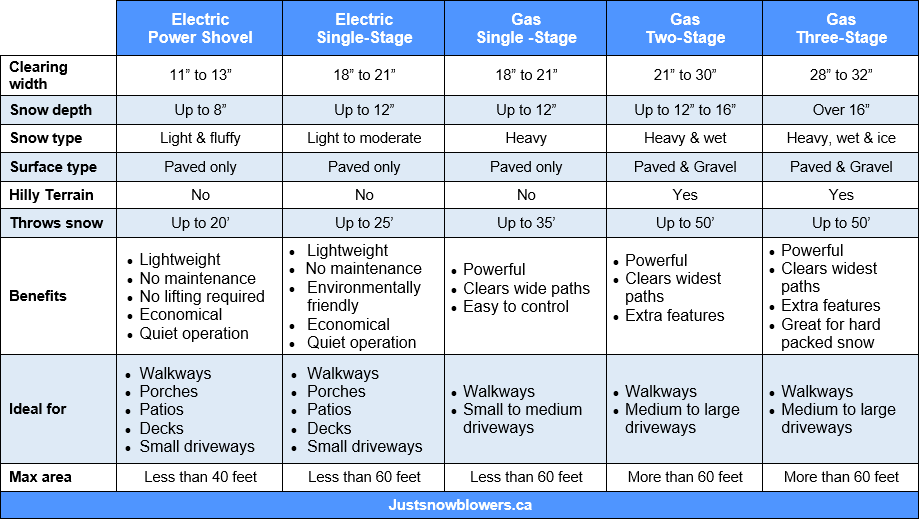A Woman's Guide to Buying a Snow Blower
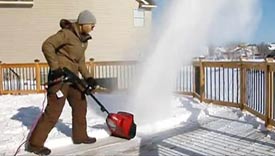 Women homeowners are on the rise. In fact, according to Statistics Canada, women who live on their own are twice as likely to own their home as are their male counterparts. This means that when winter arrives, more than half of the snow clearing is being done by these same women.
Women homeowners are on the rise. In fact, according to Statistics Canada, women who live on their own are twice as likely to own their home as are their male counterparts. This means that when winter arrives, more than half of the snow clearing is being done by these same women.
With this in mind, we thought that a special testosterone-free woman's guide to buying a snow blower was long overdue. This got us thinking about what might be different for a woman when it comes to buying a snow blower. After consulting women who owned and used snow blowers, we came up with a list of top concerns that woman share when buying a snow blower: Size/weight, reliability, ease of use, maintenance and cost. We have recently added an article about how to choose snow blowers with ergonomic handles for people with smaller hands or ability issues.
Snow Blower Size
The term "size" could actually mean many things. It could be referring to the actual physical dimensions of the unit, its weight or even how wide a path it can clear. In all of these cases, you will want to make sure that you do not buy anything that is too large or too small for your needs. We have provided a chart at the bottom of this page to help you choose the right size snow blower. Guaranteed, the first time you start one up, most snow blowers are going to feel too big but once you see it cutting through and throwing snow, you'll be happy that you bought the right size.
Snow Blower Reliability
Most women just want a snow blower that works when they need it to – they are no different from men on this topic, which is usually tied directly to maintenance. The better that you maintain your snow blower, the more reliable it should be. Today's snow blowers are well made and very reliable but choosing the right one for your application will also contribute to its reliability. Our recommendation is to select the right sized product from a top brand name and read the reviews on various websites to see if there are any major issues with it. Regular maintenance should keep your snow blower working trouble-free for many years. Storing your snow blower indoors between uses will also help.
Ease of Use
Be careful because sometimes the machine that is the easiest to use may not fully meet your requirements. For most women, the greatest concern is usually the weight of the snow blower. You may be tempted to buy a super-simple and ultra-light electric snow blower only to be let down when it is unable to clear the heavy, wet snow on your four-car driveway. Pull cords are a thing of the past. Most gas powered units today come standard with an easy to use and reliable electric starter. Higher end gas powered machines have features like power steering - some even offer auto-turning. These features make life much easier so take time to consider them over what they cost. As with many things, there will be a bit of a learning curve when it comes to using your new snow blower but take it slow and you'll be fine.
Maintenance
This is where snow blowers become very different. Electric snow blowers require no maintenance – so they are very attractive from that perspective but take a look further down the page to see their limitations. Gas powered snow blowers will require regular upkeep but this is fairly simple lubrication and yearly checks to make sure things are not broken or worn out and in need of replacement. Most single stage units use two-stroke engines that will need oil to be mixed into the fuel while two and three-stage use four-stroke engines similar to a car where the oil is kept separate from the gas. Every couple of years, it would not hurt to have a professional small engine mechanic look it over to make sure that there are no major problems.
Cost
Buying a snow blower can be an expensive proposition. Most electric units cost between $200 and $500 while Gasoline powered units start at around $500 and go up to well over $1500. Unfortunately, for most types of snow blowers, there can be other on-going costs of ownership. This can include fuel, oil, belts, cotter pins, skid plates and augers. Just be aware that once you have paid for your brand new snow blower, you can usually expect to pay more over the life of your unit.
So that addresses the most common concerns that most women have when confronted with buying a snow blower but it still does not answer all of the nitty-gritty questions. Take a look below for more details:
Snow blower types
As you have figured out by now, there are a few different types of snow blowers. It is important that you understand what each type offers. This will help you to decide which type is most suitable for your needs.
Electric – These units range from electric shovels to proper single stage units and are small, light weight and easy to handle. One of their best features is that they require no maintenance. They are available in two main formats: corded and cordless. Corded units need to be plugged in to a standard electrical outlet. Many people complain about the powder cord getting tangled and/or frozen into an awkward mess. Cordless units use on board batteries to power the blower. These units are more expensive than their corded versions and have a limited battery charge. There are also hybrid corded/battery powered units on the market that give you the best of both worlds.
Electric snow blowers use plastic or rubber augers (blades) and are considered to be light-duty. They are best for light, fluffy snow that is not very deep (less than 8-10 inches) and smaller areas like stairs, decks, walkways and single-car driveways.
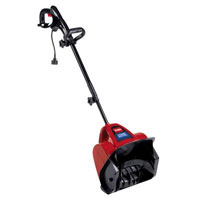
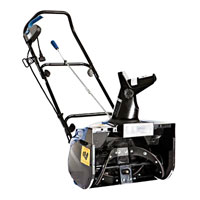
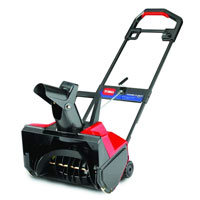
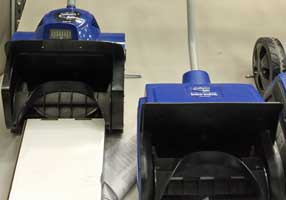
Single Stage Gas Powered – These are a small entry level snow blower, one step up from an electric snow blower. They are usually relatively inexpensive and require less maintenance than other larger gas powered units. A typical single stage units ranges from an 18 to 22 inch wide clearing path. They can usually handle loose snow up to roughly one foot deep.
A single stage snow blower uses a single plastic or rubber auger (blade) to both gather the snow as well as propel it out of the discharge chute. This limits how much it can gather and how far it can throw the snow. These units are best for smaller areas like walkways and one or two-car driveways.
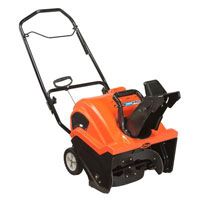
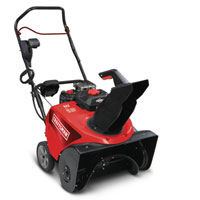
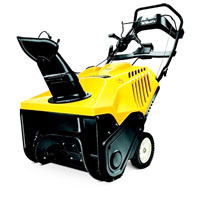
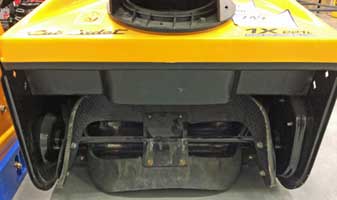
Two Stage Gas Powered – This is the most common type of snow blower. There is quite a range in size but some of these machines can get quite large. They usually range from 21 to 36 inch wide clearing path and can handle heavy or packed snow up to 20 inches deep.
A two stage snow blower uses one metal auger (blade) to chop and gather the snow and a second impeller blade to propel the snow through and out of the discharge chute. As a result, this type can throw snow much farther than the single stage design. Most two stage snow blowers are self-propelled with several forwards and reverse gears - some also have power steering. These units can easily handle most medium to large jobs but are too big to be used in tight spaces like decks.
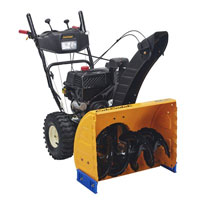
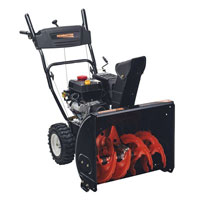
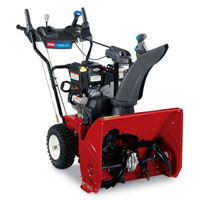
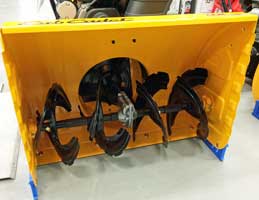
Three Stage Snow Blowers – This type is not very common. A three stage unit is similar to a two stage unit but with the addition of a third front-facing blade that is used to chop up the snow and propel it towards the main auger. This makes for a very efficient machine that naturally prevents clogging. These units are usually very large – up to 30 inches wide. They usually have all the bells and whistles and are best for very large areas.
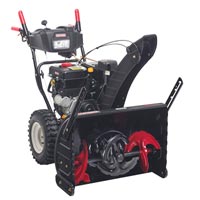
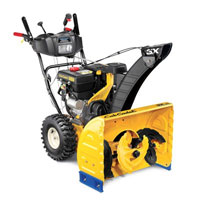
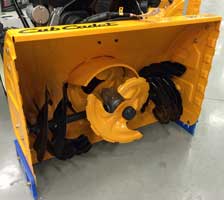
Terrain
There are two types of surfaces that need special consideration: hills and gravel covered areas. If you are clearing snow on a hill, you will need a self-propelled unit due to the weight of most machines. The weight will make manually pushing a machine up a hill almost impossible. If you have gravel covered areas that need to be cleared, avoid using single stage units. Most single stage units propel themselves along by digging the auger blade into the ground. This action on a gravel or sand surface will dig up and spray surface material along with the snow.
Type and Amount of Snow
All of the machines that we have described can easily power through a few inches of light and fluffy snow. But, if you live in area that regularly receives wet and heavy snow then you will need to buy a slightly more powerful unit. The same goes for if you live in an area that receives frequent large amounts of snowfall. Some of the smaller machines are incapable of clearing a snowfall that is more than a few inches deep.
Things to Avoid
Keep in mind all of the above points and do not buy a machine that is too big or too small or not suited to your needs. Try to keep an open mind. Like I said earlier, most snow blowers are going to look really big at first sight but they are big for a reason and you will get used to them. Resist the urge to buy a used machine – it may look like a great deal but chances are you are buying someone else’s problems and it will cost you more in the long run.
Options
Snow blowers do not come with many different options but there are a few that you should be aware of:
- Auto turn – completes a full 180 degree turn into the next row automatically
- Power steering – makes handling the machine much easier – great for larger units
- Headlight – an absolute necessity for clearing snow at night
- Heated hand grips – this is a nice luxury that keeps your hands toasty warm
- Bank cutters – these innocuous metal bars attach to the sides of the snow blower and cut perfectly straight walls at the side of the path
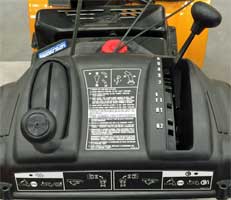
Where to Buy
All of the top brands are distributed by one of the major hardware store chains. Due to their size and weight, most snow blowers are only available online through the store website. Your may have to go directly to some specialty higher-end brands. Either way, why not buy online and have the store handle the shipping?
Shipping
Most stores that sell snow blowers offer something called truck service. This service is for delivering large, heavy objects – just like a snow blower. The price depends on how far you live from the store but in most cases, it costs less than $75. Remember, even if the people at the store load your brand new snow blower onto your vehicle for you, you’ll have to be able to remove it all by yourself – probably not an easy or safe thing to try.
Warrantee
Most new snow blowers come with a two or three year warrantee. Be sure to read your snow blower’s warrantee information and submit any documents to the company as soon as possible. One neat tip: many credit cards offer top-up insurance that adds one year to the manufactures warrantee – if you purchase the product on their credit card. This insurance does work and is very easy to access. This can save you a lot of money down the road.
Snow Blowing Tips
- Turn the machine off before clearing any snow build-up
- Always keep a full can of gas on hand
- Always keep the correct winter-weight oil on hand
- Store your snow blower in a dry location like a garage
- Clean snow off your car(s) first
- Clean your walkways last – in windy weather, snow blowers blow snow with very little control over where the snow lands
- Try to blow snow down wind – this will prevent snow blowing back into your face and onto the area that you have just cleared
- Keep discharge chute angle low to prevent wind catching the snow and blowing it all over the place
Conclusion
I know that we have covered a great deal of information here but it is crucial that you understand which type and size of snow blower actually suits your particular needs. We have distilled most of the information listed above into this handy chart that you can use when you go shopping.
Best of luck!
As promised, here is our buying guide chart:


